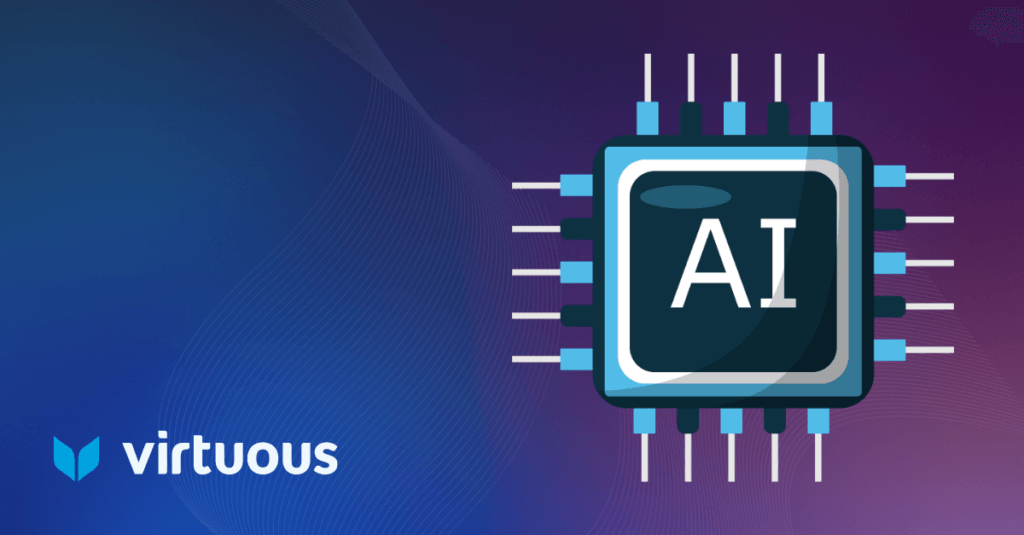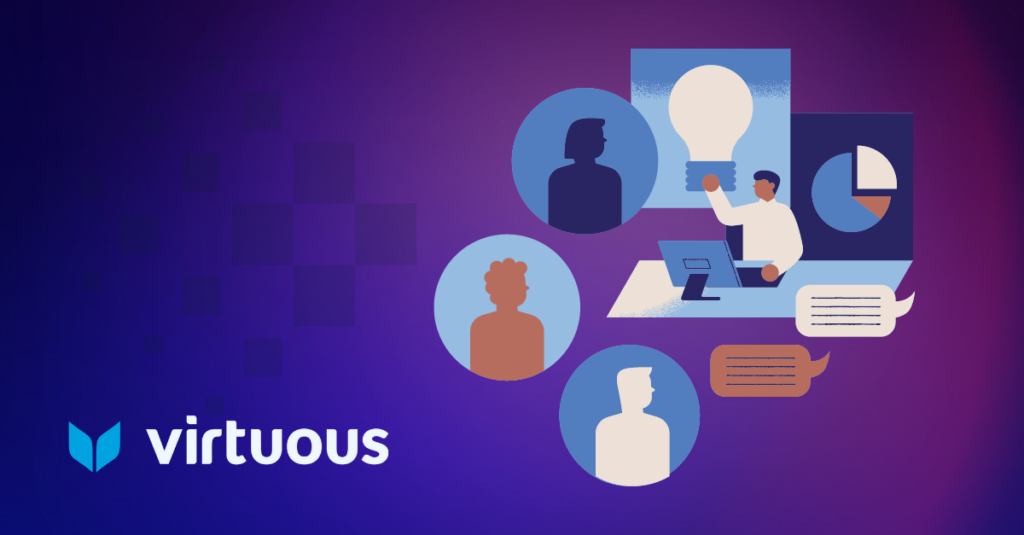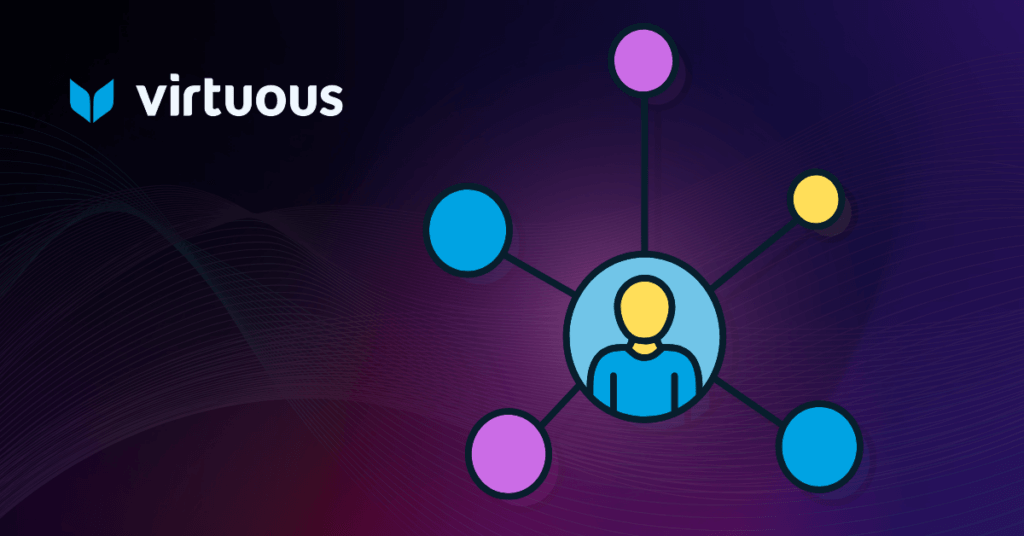How do generosity operations impact fundraising revenue? You might have heard of revenue operations. In the business world, this refers to a department that aligns revenue-generating functions such as sales, marketing, and customer success to drive growth and efficiency. Generosity operations roles work in a similar capacity but for fundraising revenue. Get to know GenOps and how your nonprofit can get started setting up this team with your organization.
For a growing nonprofit organization, there are many moving parts to consider: juggling new programs, identifying donor engagement opportunities, and making sure everything stays within budget. That said, to achieve each one of these goals, organizations need one essential thing: sustainable fundraising revenue.
This revenue is not just a financial vanity metric. It’s the lifeblood of your mission. It’s the fuel that empowers you to make a real difference in the lives of those you serve.
In any nonprofit, each department—be it fundraising, marketing, development, or donor relations—has its own unique set of objectives and specialized areas of expertise. This narrowed focus often overlooks the broader organizational goals, limiting nonprofits from reaching their fundraising potential.
The Revenue Operations of the Business World
The complexities caused by siloed departmental systems lead larger organizations to invest in dedicated fundraising operations staff. These staff members are seen as connectors, fostering collaboration across teams. However, traditional fundraising ops provide operational assistance, reports, and data updates that quite meet the strategic depth needed to drive growth and fail to extend beyond the confines of the fundraising department.
What nonprofits need is a more strategic approach that models revenue operations for e-commerce brands. RevOps in business aligns revenue-generating functions such as sales, marketing, and customer success to drive growth and efficiency.
Nonprofits have the opportunity to adopt the RevOps framework—what we like to call generosity operations. Inspired by the for-profit world, the GenOps team functions as a central hub, sharing valuable data insights and learning across all departments.
How GenOps Optimizes Fundraising Revenue
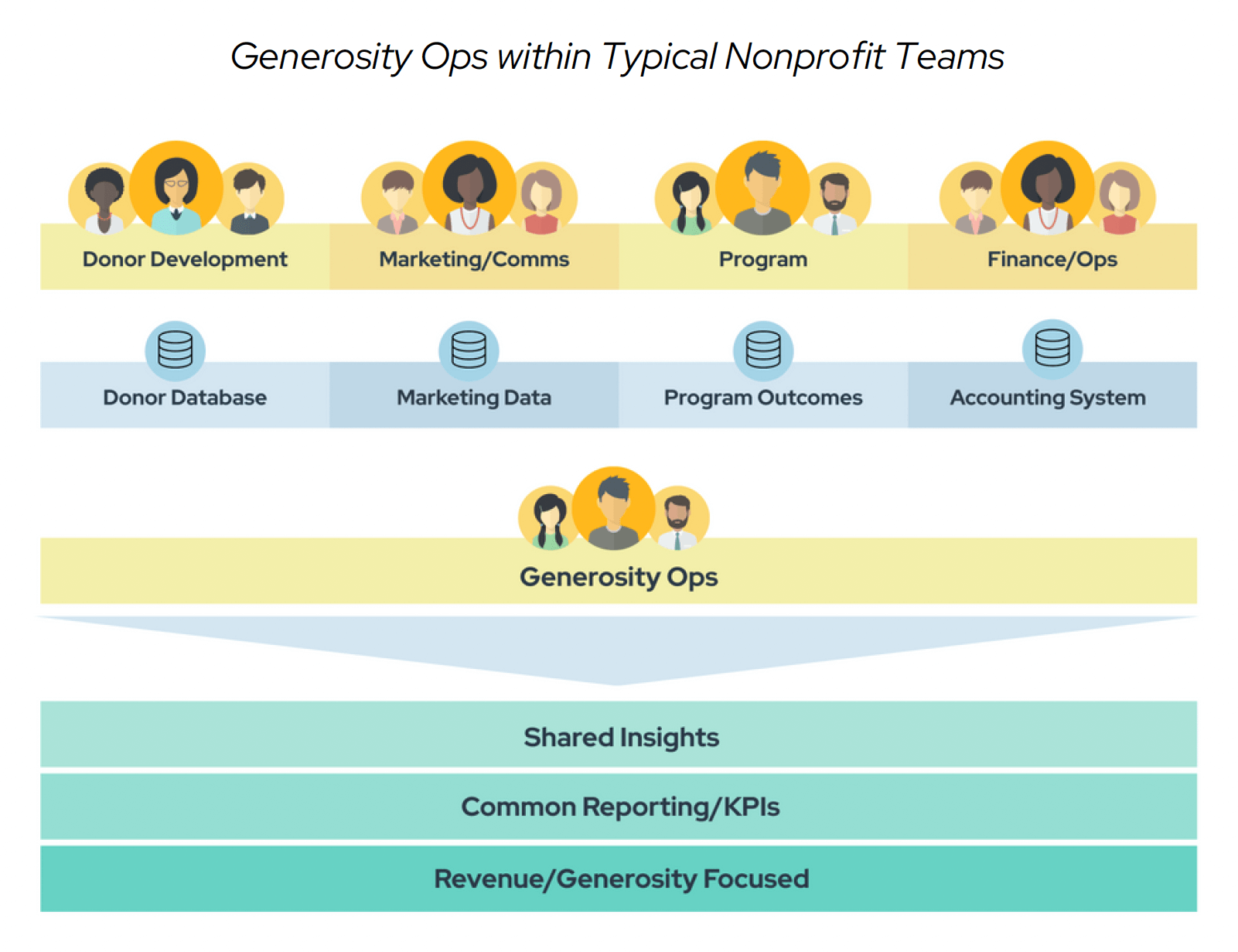
GenOps are the facilitators of helping organizations to break down data silos, taking them from isolated pieces of information and transforming them into a unified picture. This enables them to become data stewards and foster seamless collaboration across the entire organization.
“What [GenOps does] is help bring all of these data sources together under one roof, and then they provide shared insights across the team. They provide common reporting and KPIs, but they’re also very revenue- and generosity-focused,” Gabe Cooper, CEO of Virtuous, explains in a recent webinar on the responsive maturity model.
He continues, “This team can help drive insights like, ‘Hey, did you guys know that only 10% of our volunteers give? And did you know that’s probably because we’ve only asked our volunteers for money one time in the last two years?’ They’re going to uncover those insights, and then drive the data across teams to help fix those issues.”
Examples of How GenOps Affects Fundraising Revenue
Need a better idea of how GenOps can fit into your organizational flow? Here are a few examples:
- Connecting volunteer data (names, frequency, location) with donor data provides a holistic view of your supporters, enabling you to better understand and engage with your entire community.
- Surfacing program impact data and stories and tagging them for easy access allows fundraising and marketing teams to quickly source relevant stories for each donor segment and close the loop on impact, demonstrating the tangible results of their contributions.
- Identifying potential ambassadors and activists are identified early through social media, engagement, or event data and matching them with opportunities that fit their skills and passions.
- Going beyond traditional reporting allows your team to uncover hidden connections between marketing, volunteer engagement, program impact, and fundraising activities. This allows you to answer critical questions like: “Are volunteers more likely to give financially?” or “Do personalized marketing emails drive more major donors to our website?”
- Creating alignment by providing organization visibility to fundraising, marketing, and volunteer quarterly KPIs. For example, the program team may not know how much the new campaign is hoping to raise. This transparency ensures that all departments are informed and working towards shared objectives.
Greater efficiency, smarter decisions, maximized impact—that’s the power of GenOps.
Fundraising Revenue and GenOps: Where to Start
While it’s easy to assume that GenOps only applies to large-scale nonprofits, even smaller nonprofits can still leverage their benefits because it’s a scalable approach. Whether you’re a small grassroots organization or a more established nonprofit, adopting GenOps principles can find the gaps and opportunities in your fundraising and ultimately amplify your impact in the community.
Nevertheless, when implementing any new tactic or strategy, it’s crucial to experiment and customize your approach to fit your organization’s unique context and needs. Let’s discuss the initial steps to building your GenOps team.
Create the Role
Establishing the GenOps role requires careful consideration of the team structure and resource allocation. Ask critical questions like:
- How will the GenOps role integrate with existing teams and workflows?
- What specific skills and expertise are needed to fulfill the responsibilities of the GenOps role?
- What tools and technologies will be necessary to support GenOps initiatives effectively?
- How will the success of the GenOps role be measured and evaluated over time?
For certain organizations, kicking off with a three-person cross-departmental team along with a part-time technical resource can be a solid starting point. This allows for the essential functions of data analysis, collaboration, and communication to be shared responsibilities, ensuring you’re making progress while optimizing your resource allocation.
Inform the Team
When bringing on a new team member, you should take the appropriate steps to inform your team of your decision to hire a GenOps specialist. Everyone needs to know why this matters and how it fits into the overall picture. Keeping everyone in the loop from the get-go sets the stage for a smooth transition and gets everyone excited about the new team member!
Here are some tips for relaying the message:
- Articulate the purpose and goals: Ensure everyone understands the “why” behind GenOps—maximizing fundraising potential and achieving your organization’s mission.
- Highlight benefits for all: Emphasize how GenOps benefits the entire organization, not just specific departments. Explain how it will smooth out processes, encourage collaboration, and accomplish more mission impact.
- Define individual roles: Clearly communicate how each department will interact with GenOps and how their contributions are important to the organization’s long-term success. This fosters ownership of responsibilities.
Change can be harder for some rather than others. But by fostering transparency and clarity, you’ll keep an open and honest line of communication and hopefully earn enthusiastic support and buy-in from everyone involved.
Explain the Long-Term Value
When new roles and departments are introduced, some team members may feel uncertain about their job security. If you’re finding a wave of hesitation from your team, take the opportunity to illustrate to them the transformative potential of GenOps over the long term.
GenOps isn’t here to replace marketing or development. Rather, GenOps will help bridge the gap between these departments, facilitating more unified communication, collaboration, and data-sharing.
By breaking down silos, GenOps can lead to significant improvements in efficiency, decision-making processes, and revenue generation. Be sure to emphasize how leveraging data insights across departments can drive growth and impact, aligning efforts with the organization’s overarching goals.
Find the Right Person
Identify individuals who have the skills, experience, and passion for driving organizational change through GenOps. Look for team players who are adept at communication, problem-solving, data analysis, and project management. Consider both internal and external candidates who can bring fresh perspectives and diverse skill sets to the table.
Additionally, it’s crucial to secure executive sponsorship and grant the team autonomy, along with providing them with prompt access to data and technology. This ensures they can swiftly enact changes and drive progress within the organization.
Set GenOps Up for Fundraising Revenue Success With a Responsive CRM
For GenOps to succeed in their role, they need the right tool to help them glean data insights across the entire organization. If your data is fragmented across different platforms, it can cause inefficiencies and oversight, creating roadblocks in making informed decisions and identifying growth opportunities.
Equip your GenOps team with responsive nonprofit CRM software that’s able to seamlessly integrate with other systems. This will consolidate all your organization’s data, allowing GenOps to access and analyze information from various departments. With CRM analytics, they can easily track donor interactions, measure campaign effectiveness, and identify trends to make the best decisions on fundraising.
With Virtuous BI, organizations benefit from dynamic data perspectives and personalized dashboards, empowering them to deliver timely insights to every GenOps member when needed. This adaptable approach to data management guarantees that each team member receives customized, actionable insights, enriching decision-making processes and fundraising strategies.
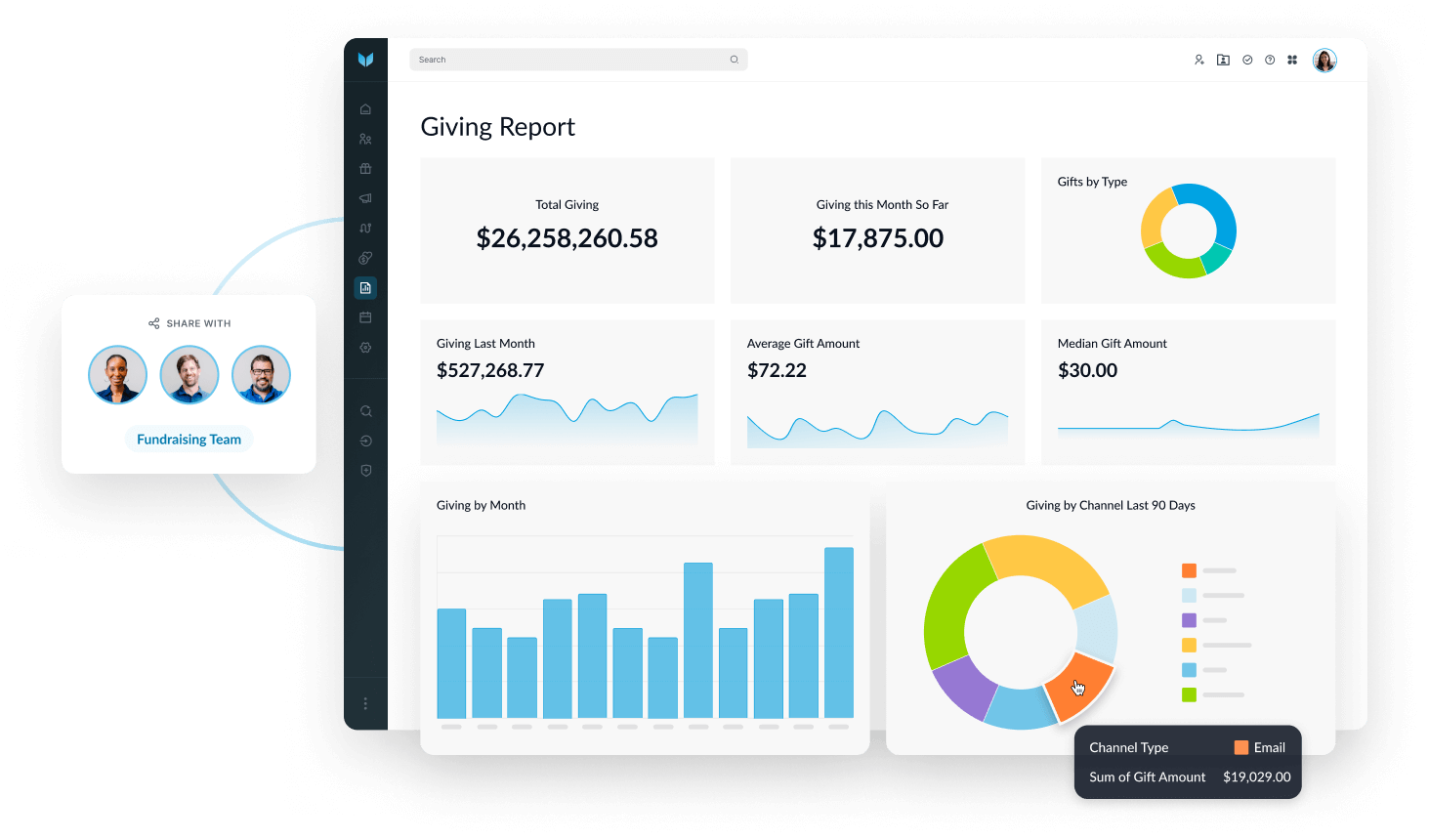
With Virtuous’ user-friendly interface and dynamic training resources, your new GenOps team member can quickly familiarize themselves with the platform’s functionalities and start making the most of its capabilities to optimize fundraising operations.
For a growing organization like Josiah White, an intuitive nonprofit CRM is essential. Previously, they encountered challenges with Raiser’s Edge, grappling with its steep learning curve and exhaustive processes, which often made even basic tasks time-consuming and inefficient.
“It’s much easier for us to add team members to Virtuous. We’ve gone from fifteen users to thirty users! It’s easier for us to train and add them to the system. With Blackbaud, it was always difficult adding new users. It either wouldn’t happen or something would get hung up with customer support,” says Kevin Trotter, VP of Advancement at Josiah White.
Next step: Build Dynamic Campaigns
To help you become a more responsive nonprofit, we’ve adopted a maturity model framework, a step-by-step guide often used by organizations to benchmark their current level of maturity against industry best practices.
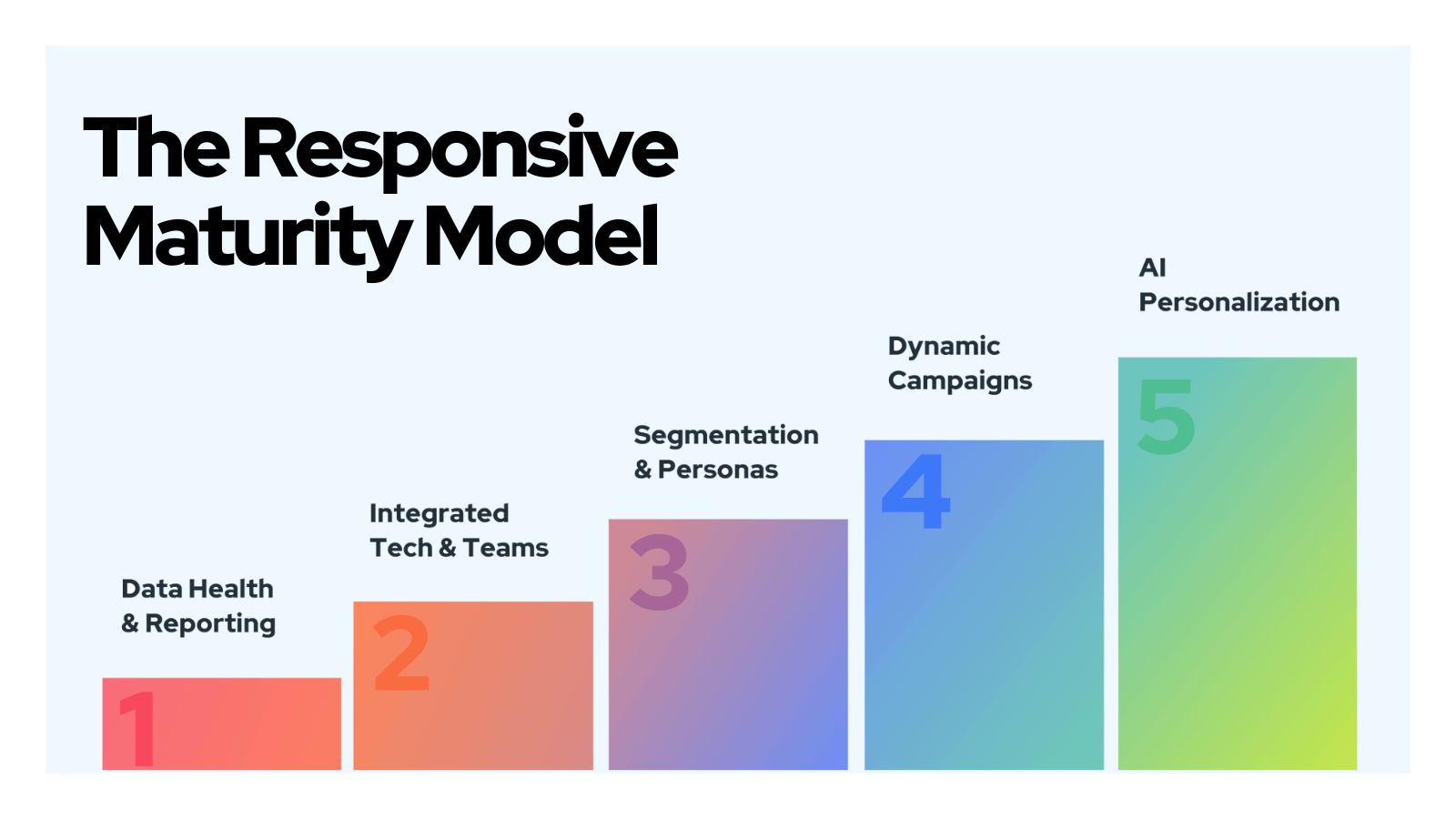
As you progress across each step, you’ll see increased team effectiveness, increased donor retention and gift size, decreased staff burnout, improved advocacy, and improved donor acquisition metrics.
Download The Responsive Maturity Model: 5 Building Blocks to Drive Increased Generosity to learn the five building blocks of responsive fundraising.

